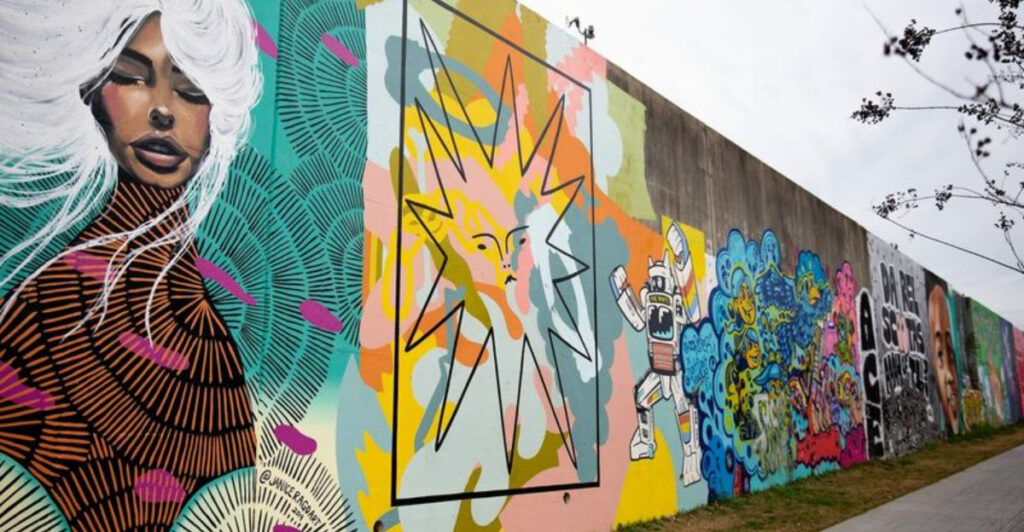America’s cities hide vibrant treasures where everyday streets transform into living art galleries. From coast to coast, these color-drenched thoroughfares showcase the artistic soul of their communities through murals, painted buildings, and creative installations. These aren’t just pretty photo spots—they’re cultural landmarks where history, identity, and artistic expression blend in spectacular fashion.
Wynwood Walls – Miami, Florida
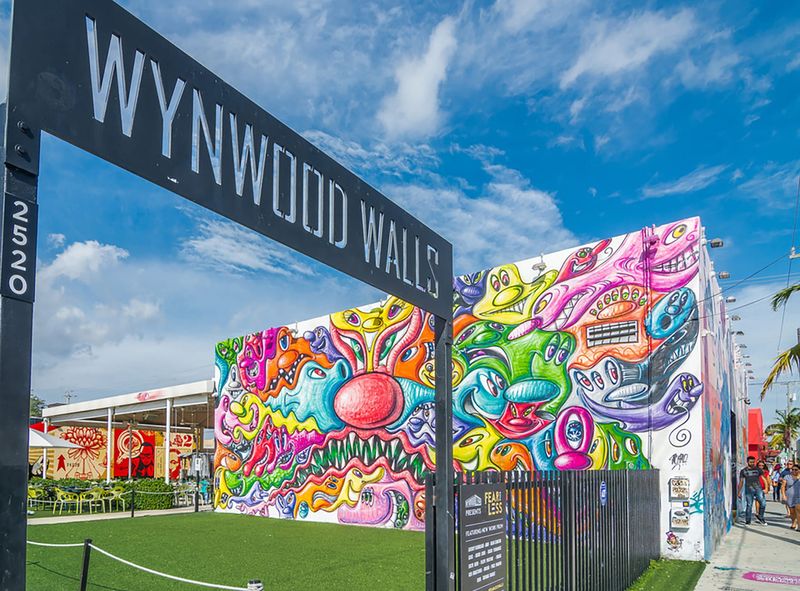
Abandoned warehouses became Miami’s most photographed neighborhood through a remarkable transformation. What began as developer Tony Goldman’s vision in 2009 has exploded into over 35,000 square feet of world-class street art.
International artists like Shepard Fairey and Kenny Scharf have turned industrial facades into cultural statements, drawing crowds year-round. The district pulses with life beyond the murals—boutiques, breweries, and galleries create a complete artistic ecosystem.
Monthly Art Walk events turn the neighborhood into an outdoor festival where visitors can watch artists creating new pieces in real-time while sampling local cuisine from food trucks parked alongside the colorful walls.
Rainbow Row – Charleston, South Carolina
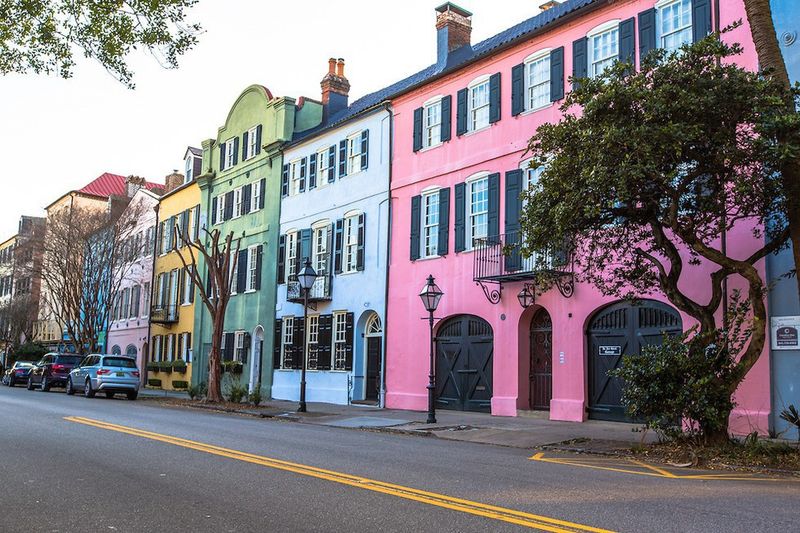
Pastel perfection lines East Bay Street where thirteen historic Georgian townhouses stand in a cheerful row of pink, yellow, blue, and green. Dating back to the 1740s, these homes narrowly escaped demolition before visionary Dorothy Porcher Legge began their colorful restoration in the 1930s.
Local lore suggests the bright colors helped intoxicated sailors find their way home from the nearby port. Others claim shopkeepers painted their stores different colors to help illiterate customers identify their businesses.
Whatever the true origin, Rainbow Row has become Charleston’s most photographed spot and a living testament to historic preservation with vibrant flair. The homes remain privately owned but are easily admired from the public sidewalk.
Freak Alley – Boise, Idaho
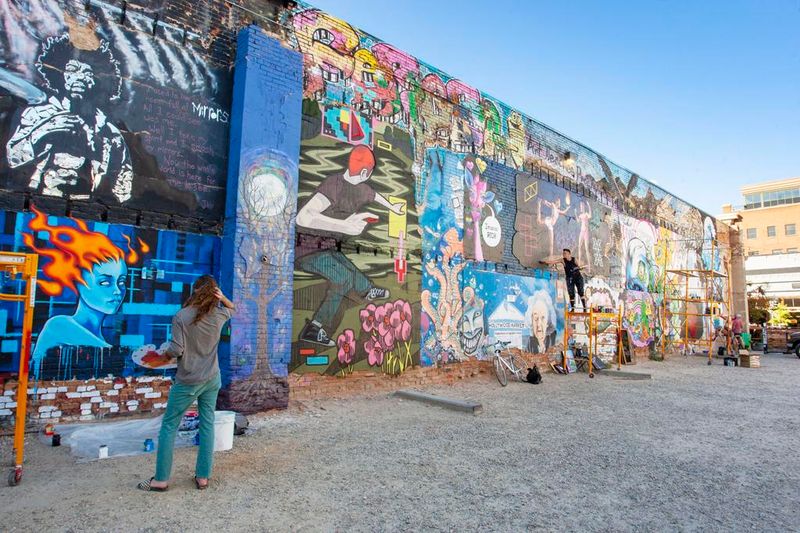
Hidden between buildings in downtown Boise lies the Northwest’s largest outdoor gallery. What started in 2002 with a single permitted graffiti piece has evolved into a sprawling 120-foot-long canvas of ever-changing artwork.
Unlike most street art districts, Freak Alley intentionally refreshes its murals every few years. Artists from across Idaho and beyond compete for wall space during massive repainting events that transform the alley into a community celebration.
The artwork ranges from whimsical to thought-provoking, featuring everything from steampunk robots to surrealist dreamscapes. Local businesses embraced the cultural phenomenon, with nearby restaurants and shops incorporating the alley’s artistic energy into their own aesthetics.
Balmy Alley – San Francisco, California
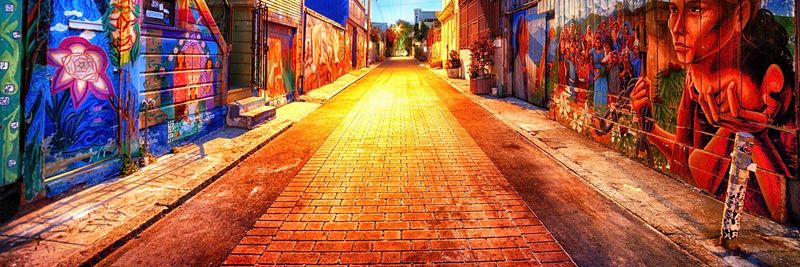
Tucked away in the Mission District, this narrow passageway holds the highest concentration of murals in a city famous for its street art. Since the 1980s, Balmy Alley has served as a powerful canvas for artists expressing political resistance and cultural pride.
The murals primarily focus on human rights struggles, particularly those in Central America. Walking the alley reveals a visual timeline of social justice movements that have shaped San Francisco’s activist identity.
Unlike commercial art districts, Balmy Alley maintains grassroots authenticity. Local residents maintain the murals and often participate in their creation. The intimate scale—just one block long—creates an immersive experience where visitors can spend hours discovering details within each densely packed artwork.
Cabbagetown – Atlanta, Georgia
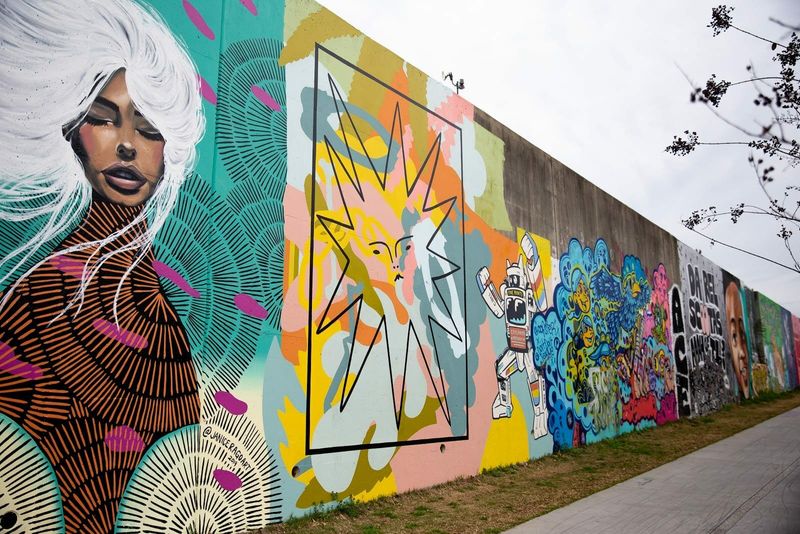
Former cotton mill workers’ homes now showcase Atlanta’s most concentrated outdoor gallery. This historic neighborhood transformed from industrial decline to artistic renaissance through the Forward Warrior initiative, which invites dozens of artists to paint new murals each year.
The district’s name comes from its working-class history—residents supposedly grew cabbage in their front yards during the Great Depression. Today, the neighborhood balances preservation with artistic evolution.
Wylie Street forms the neighborhood’s artistic backbone, where industrial walls burst with color against the backdrop of historic bungalows. Unlike curated art districts, Cabbagetown’s murals range from commissioned masterpieces to spontaneous expressions, creating an authentic urban tapestry that reflects Atlanta’s diverse creative community.
The Heidelberg Project – Detroit, Michigan
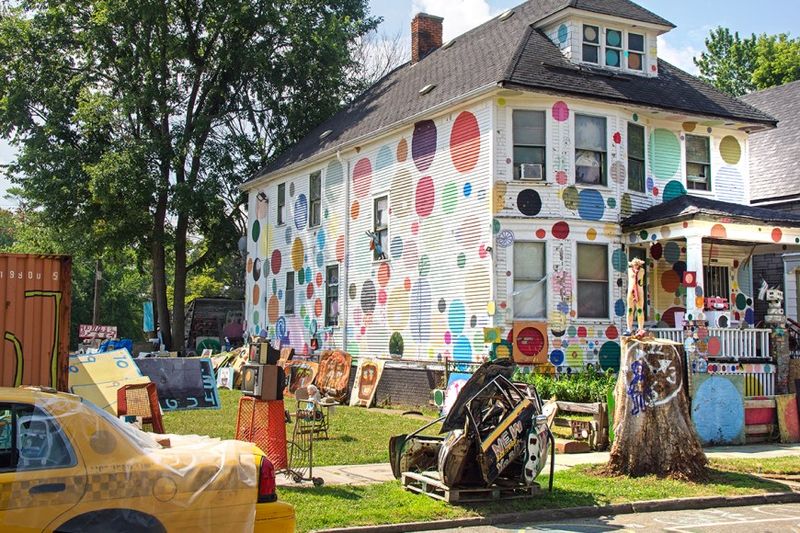
Artist Tyree Guyton transformed his childhood street into a controversial outdoor art installation using abandoned houses as his canvas. Since 1986, this ever-evolving project has covered homes with vibrant polka dots, stuffed animals, salvaged signs, and found objects—creating a surreal landscape in one of Detroit’s struggling neighborhoods.
More than mere decoration, the project challenges viewers to consider urban decay, consumerism, and racial inequality. Polka dots symbolize the diversity Guyton envisions for his community.
Despite facing demolition attempts and arson, the project persists as both tourist attraction and community anchor. Guided tours explain the deeper meaning behind seemingly chaotic arrangements, revealing how this colorful street serves as both artistic statement and neighborhood revitalization effort.
Painted Ladies – San Francisco, California
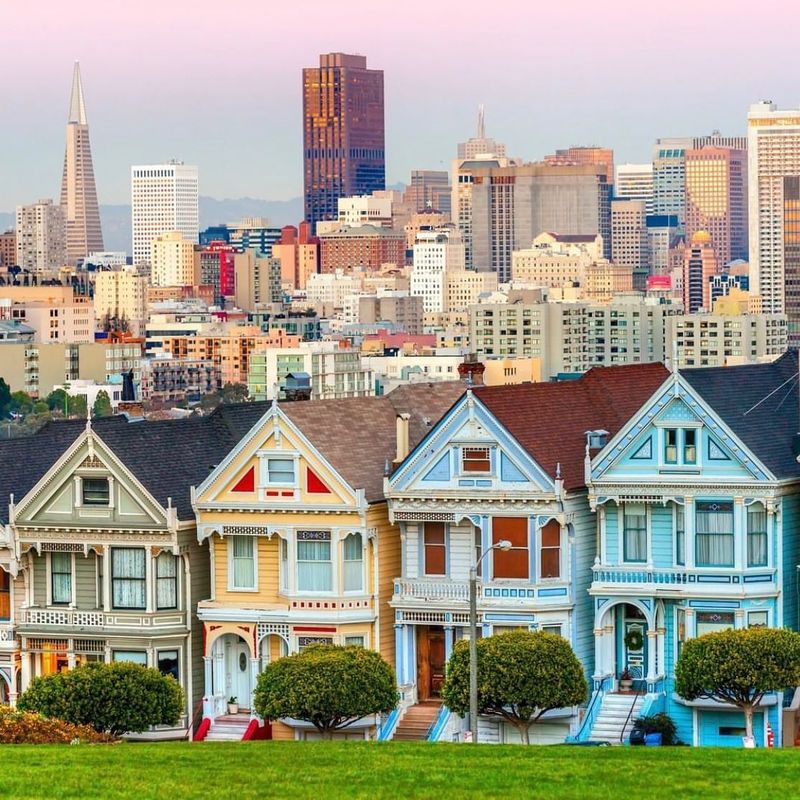
Victorian elegance meets candy-colored charm along Steiner Street facing Alamo Square Park. These seven ornate homes, built between 1892 and 1896, survived the 1906 earthquake and gained iconic status through their appearance in countless films, television shows, and postcards.
The homes earned their “Painted Ladies” nickname in the 1970s when the colorist movement swept through San Francisco. Homeowners began highlighting their Victorians’ ornate architectural details with multiple paint colors—a dramatic departure from the battleship gray that covered many historic buildings during World Wars.
The most photographed view captures these pastel beauties against downtown skyscrapers, symbolizing San Francisco’s blend of historic charm and urban innovation. Though privately owned, visitors can admire them from the sloping lawn of Alamo Square Park.
Beale Street – Memphis, Tennessee
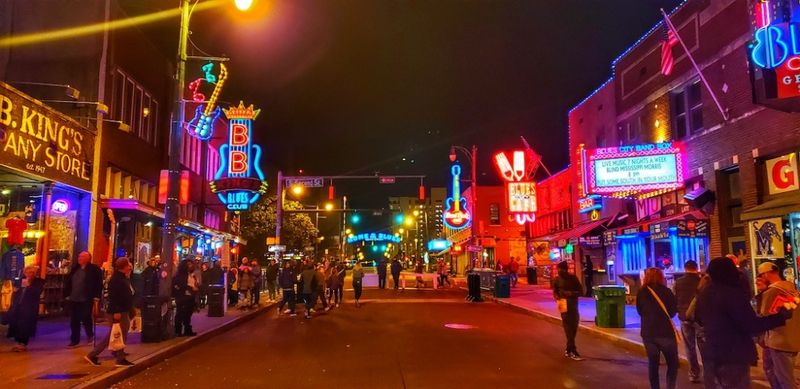
Electric blues and neon lights create a nighttime rainbow on America’s most musical street. Since the early 1900s, Beale Street has served as the vibrant heart of Memphis culture, where colorful signs illuminate buildings that once housed the birthplace of blues music.
During Prohibition, underground clubs with colorful facades provided safe havens for African American musicians. Today, the three-block entertainment district preserves this legacy through preserved historic buildings painted in bright blues, purples, and yellows.
Unlike art-focused colorful streets, Beale’s visual appeal comes from its glowing signage and musical heritage. Brass notes embedded in the sidewalk create a literal “Walk of Fame” honoring music legends who performed here, adding another layer of color to this national historic landmark.
Umbrella Sky Project – Coral Gables, Florida
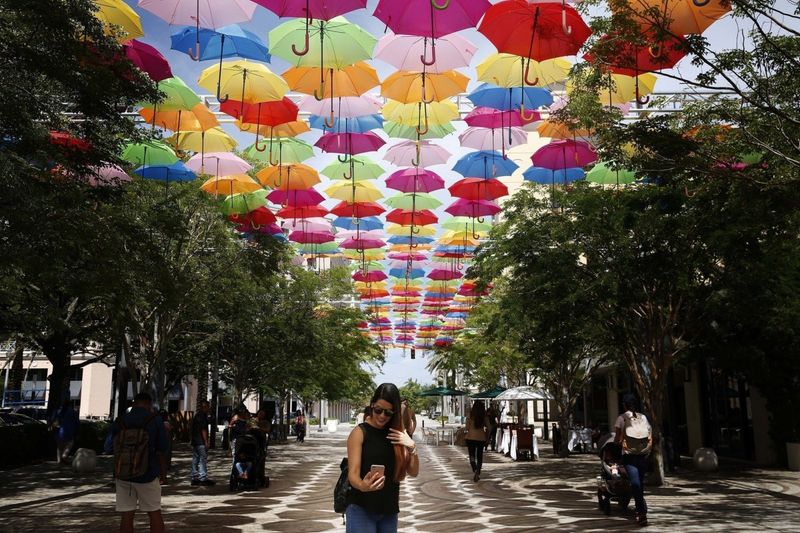
Hundreds of vibrant umbrellas suspended above Giralda Plaza transform an ordinary street into a whimsical canopy of color. This temporary installation, originally created in Portugal, found its American home in this Miami suburb where it creates both stunning visuals and practical shade.
The colorful umbrellas shift gently in the breeze, casting kaleidoscopic shadows on pedestrians below. Local restaurants extend their seating into the street, allowing diners to enjoy meals under the artistic ceiling.
Unlike permanent street art, this installation changes seasonally, sometimes featuring umbrellas, sometimes lanterns or other suspended elements. The ephemeral nature makes it especially popular on social media, where visitors capture its ever-changing appearance against the Mediterranean revival architecture of surrounding buildings.
The Graffiti Highway – Centralia, Pennsylvania
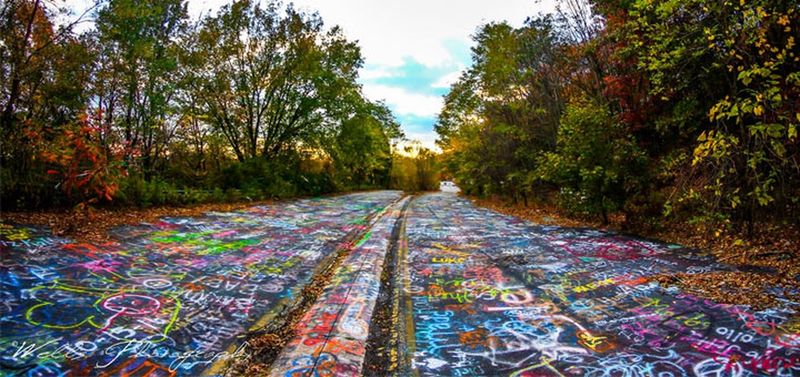
Nature reclaims an abandoned stretch of Route 61 while visitors have transformed it into a mile-long canvas of colorful expression. This unique attraction formed after an underground mine fire forced the town’s abandonment in 1962, causing the highway to buckle and crack.
As vegetation pushed through the fractured asphalt, visitors began adding their own colorful marks. Every inch of the accessible roadway became covered with vibrant graffiti—from artistic murals to personal messages and handprints.
Unlike curated street art districts, this colorful road developed organically through thousands of anonymous contributions. Visitors would often bring their own spray paint to add to the collective artwork. Note: In April 2020, the property owner covered the highway with dirt, though some colorful sections may still be visible.

